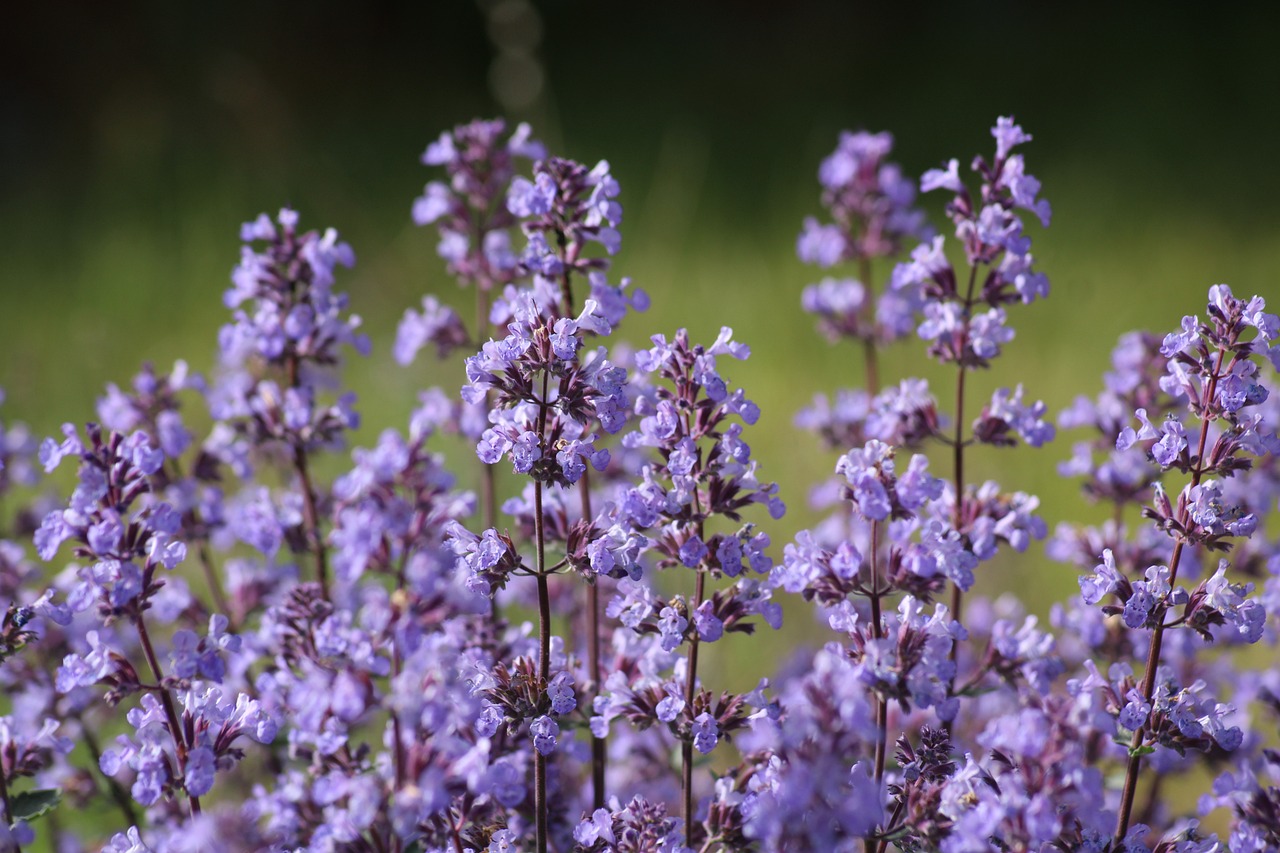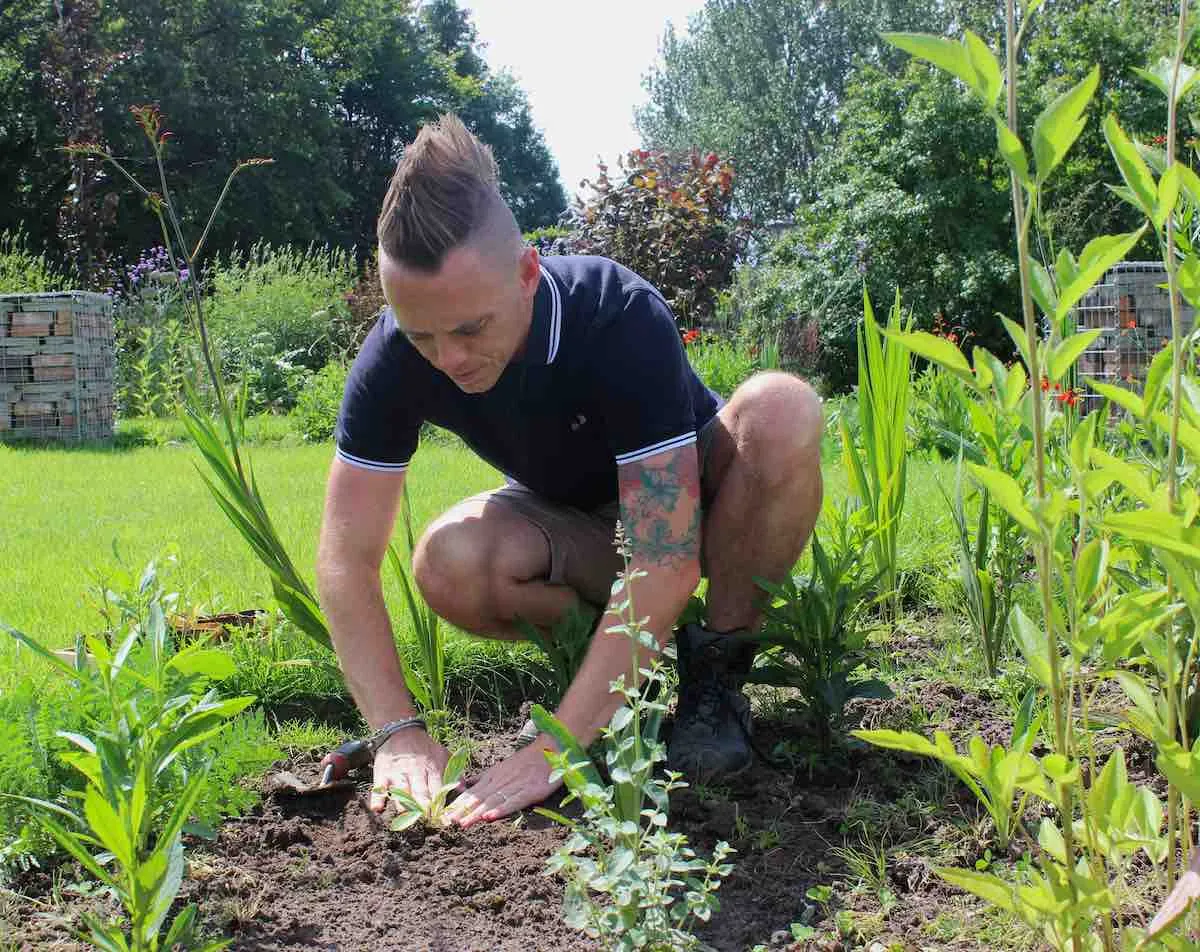Hi @daisydaisy
Great question about Catmint or Nepeta. It's a fabulous bulletproof herbaceous perennial that is fast-growing and slug-proof and will grow anywhere in full sun (even some dappled shade sometimes).
What you're experiencing is totally natural as Nepeta gets older. The new growth tends to be focused around the outside, with the middle bare, a bit like ornamental grasses which age the same way. What you may find is the vigorous outside with covers the centre in most cases. However, it is a sign from your Nepeta that it would like to be divided (creating more Catmints for free!!)

How to divide and revive Nepeta (Catmint).
The best way to ensure even growth with Nepeta is to lift and divide every 5 or so years.
Aim to lift your Nepeta in early spring, just as new growth starts to emerge or in Autumn; avoid lifting it when it's flowering or mid-summer when it will be under too much stress to recover properly.
Lift the Nepeta with a spade or, ideally, a garden fork, then divide with a sharp spade. You can easily get three or even five divisions of an established Nepeta (Catmint). You could even divide it further, though they will take longer to bulk back up.
Plant the divisions immediately, or if not, pot them in peat-free compost and water them ready for their new planting home. You could even gift some to friends, as Nepeta is great for honey bees, and the scent of walking past them midsummer is divine!
Water well once you have related, and they recover in no time!
https://youtu.be/Dv3mhh1eFFc
What growing conditions does Catmint like?
For anyone else thinking about adding Nepeta or Catmint to a garden, then the guide below will help. It's a fabulous beginner herbaceous perennial and really helps bulk up your borders without any real demands.
-
Sunlight: Nepeta prefers full sun but can tolerate partial shade, especially in hotter climates.
-
Soil: Well-draining soil is essential for Nepeta, as it dislikes standing water. It can tolerate various soil types, including sandy, loamy, or clay soils, as long as they are well-draining.
-
Moisture: Nepeta prefers moderately moist soil but is relatively drought-tolerant once established. Avoid overwatering, as it can lead to root rot.
-
pH Level: Nepeta thrives in slightly alkaline to neutral soil with a pH range of 6.0 to 7.5.
-
Temperature: Nepeta is relatively cold-hardy and can withstand temperatures down to USDA Hardiness Zones 3 to 8, depending on the variety.
-
Air Circulation: Good air circulation helps prevent fungal diseases and encourages healthy growth. Avoid planting Nepeta in overly crowded or stagnant areas.
-
Pruning: Regular pruning, especially after the first flush of blooms, encourages bushier growth and prolongs flowering.
-
Pests and Diseases: Nepeta is generally resistant to pests and diseases, but it can attract cats, which may roll around in the plant. Watch out for aphids, spider mites, and powdery mildew in humid conditions.
I hope that helps, and do let us know how you get on; feel free to post some pictures of your divisions on here so other Ninjas who are having the same problems!
All the best
Lee Garden Ninja
Hi @daisydaisy
Great question about Catmint or Nepeta. It's a fabulous bulletproof herbaceous perennial that is fast-growing and slug-proof and will grow anywhere in full sun (even some dappled shade sometimes).
What you're experiencing is totally natural as Nepeta gets older. The new growth tends to be focused around the outside, with the middle bare, a bit like ornamental grasses which age the same way. What you may find is the vigorous outside with covers the centre in most cases. However, it is a sign from your Nepeta that it would like to be divided (creating more Catmints for free!!)

How to divide and revive Nepeta (Catmint).
The best way to ensure even growth with Nepeta is to lift and divide every 5 or so years.
Aim to lift your Nepeta in early spring, just as new growth starts to emerge or in Autumn; avoid lifting it when it's flowering or mid-summer when it will be under too much stress to recover properly.
Lift the Nepeta with a spade or, ideally, a garden fork, then divide with a sharp spade. You can easily get three or even five divisions of an established Nepeta (Catmint). You could even divide it further, though they will take longer to bulk back up.
Plant the divisions immediately, or if not, pot them in peat-free compost and water them ready for their new planting home. You could even gift some to friends, as Nepeta is great for honey bees, and the scent of walking past them midsummer is divine!
Water well once you have related, and they recover in no time!
What growing conditions does Catmint like?
For anyone else thinking about adding Nepeta or Catmint to a garden, then the guide below will help. It's a fabulous beginner herbaceous perennial and really helps bulk up your borders without any real demands.
-
Sunlight: Nepeta prefers full sun but can tolerate partial shade, especially in hotter climates.
-
Soil: Well-draining soil is essential for Nepeta, as it dislikes standing water. It can tolerate various soil types, including sandy, loamy, or clay soils, as long as they are well-draining.
-
Moisture: Nepeta prefers moderately moist soil but is relatively drought-tolerant once established. Avoid overwatering, as it can lead to root rot.
-
pH Level: Nepeta thrives in slightly alkaline to neutral soil with a pH range of 6.0 to 7.5.
-
Temperature: Nepeta is relatively cold-hardy and can withstand temperatures down to USDA Hardiness Zones 3 to 8, depending on the variety.
-
Air Circulation: Good air circulation helps prevent fungal diseases and encourages healthy growth. Avoid planting Nepeta in overly crowded or stagnant areas.
-
Pruning: Regular pruning, especially after the first flush of blooms, encourages bushier growth and prolongs flowering.
-
Pests and Diseases: Nepeta is generally resistant to pests and diseases, but it can attract cats, which may roll around in the plant. Watch out for aphids, spider mites, and powdery mildew in humid conditions.
I hope that helps, and do let us know how you get on; feel free to post some pictures of your divisions on here so other Ninjas who are having the same problems!
All the best
Lee Garden Ninja
 Lee Burkhill: Award Winning Designer & BBC 1's Garden Rescue Presenters Official Blog
Lee Burkhill: Award Winning Designer & BBC 1's Garden Rescue Presenters Official Blog



